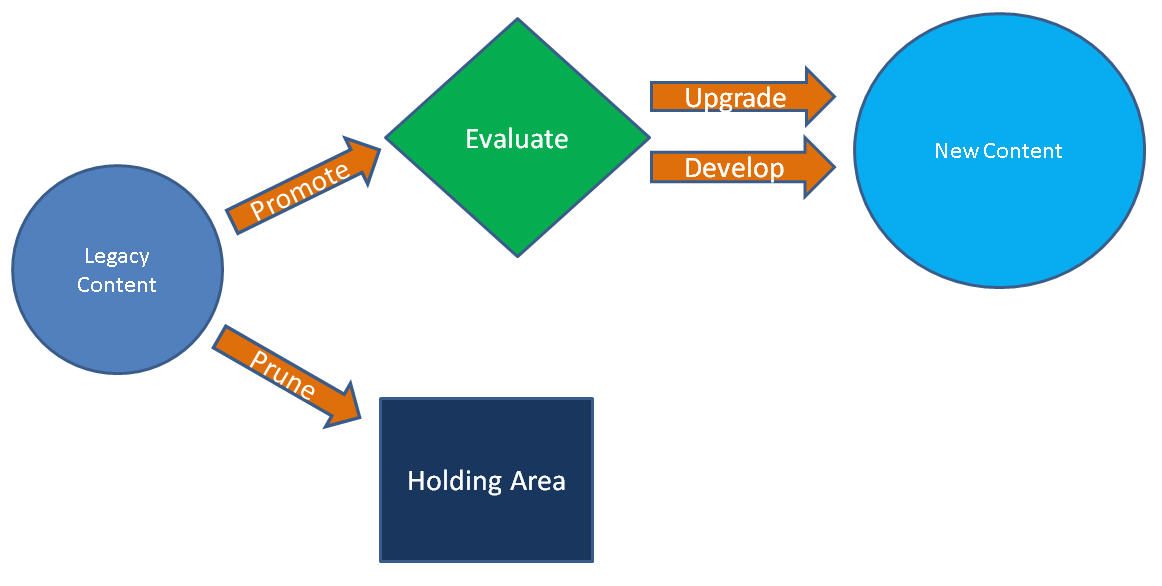Take a Value Based Approach to Your Analytics Platform Migration
Analytics platform migrations and upgrades are among Ironside’s core competencies. We’ve been doing them since our inception, and we do a lot of them.
Here are four common pitfalls that we’ve seen organizations from a variety of industries suffer from during the process.
Universal Pitfalls
1. Overlooking the Opportunity to Prune and Consolidate: A Value Based Approach

Doing an analytics platform migration or upgrade is often an overwhelming process. So overwhelming, in fact, that sometimes you can’t fathom the idea of taking any steps that might drag the planning process out longer. Before launching into this effort, it’s important to consider a step that could potentially save you and your organization a lot of time and money.
The step we reference is that of assessing the value of the analytics content your organization has created, and determining what’s worth migrating. You can accomplish this by reviewing usage and redundancy with an audit of your content, as shown in the chart above.
If you have a lot of analytics content in your environment this may seem like a daunting and unnecessary step…but just imagine investing 2 weeks of effort in this analysis and, as a result, being able to reduce your migration effort by 30%? Or 50%? How much value is gained by migrating content no one has used in 2 years? As you can see in the figure above, it’s often the case that organizations have a very large number of very lightly utilized reports.
Organizations who take this step are often surprised by how much value they can generate. If you’ve been adding new content year after year without regularly assessing its value, there’s likely an opportunity for a bit of house cleaning.
2. Training and Adoption
Don’t forget this step. Just because you’ve done your due diligence and have seen demos or perhaps explored the new platform doesn’t mean that all of your users have. If they aren’t provided adequate, appropriate, and timely training then the likelihood that they’ll adopt or be successful with the new platform is slim. A lack of training may also lead to a bit of discontent, aimed either at the new platform or those that impacted their workflow and methods.
It doesn’t have to be painful. For upgrades this training often isn’t in the form of re-training but rather some sort of bridge training. End users may already know 80% of what they will see and just need a quick crash course on what to expect when the new platform goes live.
Migrations
3. Approaching It as an Apples to Apples Move or Rebuild

A move from one platform to another is a large undertaking. A common (and unfortunate) approach is to oversimplify things and attempt to rebuild everything 1 for 1. There are certainly times when the 1 for 1 migration must occur, but we find that those organizations who involve their end-users and facilitate discussions on how to best take advantage of new platform functionalities get the best return on their investment. Organizations should undertake a deliberate review of their content with a readiness to make decisions about where, how, and if it should be migrated in order to take full advantage of the feature set of the new platform. You can think about this as a decision tree like the one shown above.
When you go through the often exhausting effort required for analytics platform migration, your goal should be finishing with more options and functionality than you had when you started. You want to be confident when you complete the project that there is a recognizable return on your investment.
4. Forgetting that the New Platform Is…New
Odds are, your new platform won’t work exactly the way your legacy platform did. It likely wasn’t meant to. Sometimes, what you’ve built before has no clear mapping to what’s possible in the new platform. Not to worry; we seldom run into a situation where we can’t find an appropriate solution for the job.
Remember to be open to change. Set the expectation with your user community that new features may render old functionality obsolete or require modifications. A new tool will always have functionality that you will need to adapt to over time.
If you’re deciding about an analytics platform migration, one of the best investments you can make is in education. Check out resources, such as training courses, available around the platform you’ve chosen to migrate to. They can give you security and confidence as the process gets underway.
About Ironside
Ironside was founded in 1999 as an enterprise data and analytics solution provider and system integrator. Our clients hire us to acquire, enrich and measure their data so they can make smarter, better decisions about their business. No matter your industry or specific business challenges, Ironside has the experience, perspective and agility to help transform your analytic environment.






